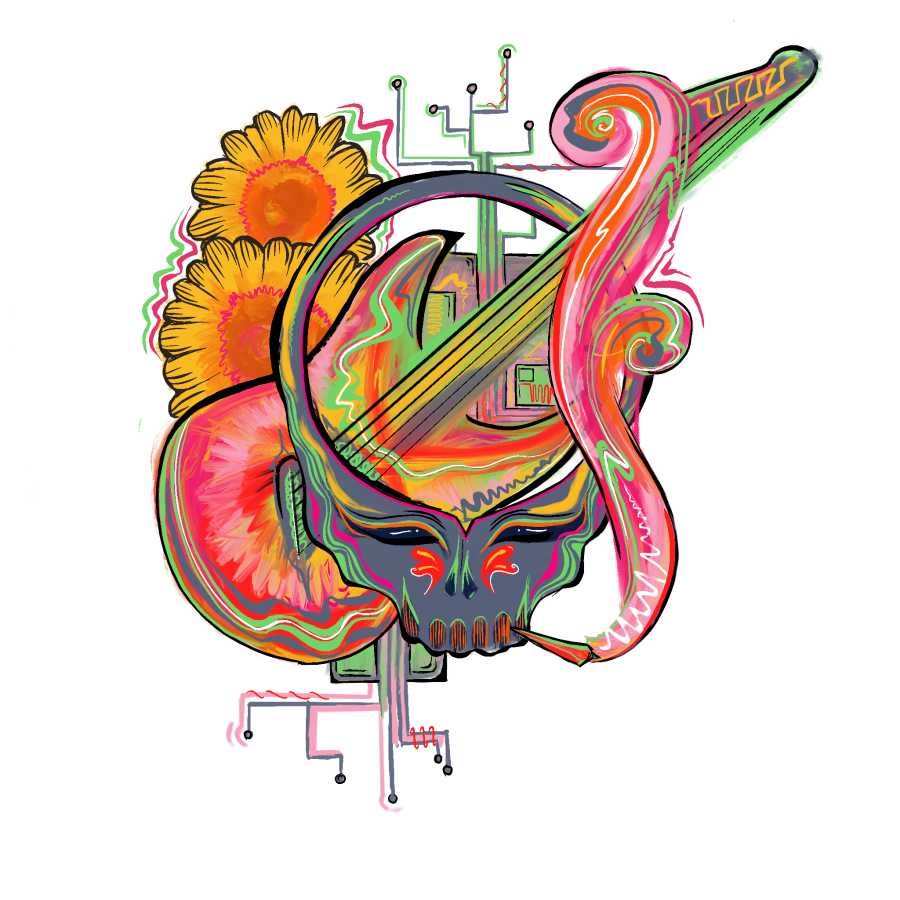Silicon Valley is a place where things begin. Whether through technological innovation or groundbreaking scientific discoveries, the community is known for having an outsized impact on the rest of the world.
However, the spotlight placed on the tech giants that make the earth go round often outshines the fact that Silicon Valley was the birthplace of one of the most important social shifts in American history: the counterculture Movement.
According to local historian Bo Crane, it all began with a 1956 concert in the Haymarket Theater. Folk music legend Pete Seeger played a show attended by Stanford student Dave Guard, later a member of the Kingston Trio, and then-Paly junior Joan Baez –– both of whom were later inspired to become folk musicians and would go on to popularize the genre on a national scale. They would later inspire other local musicians such as Jerry Garcia.
Sociology teacher Benjamin Bolanos said music played an important role in the counterculture movement.
“I think the music allowed for a critique of a system without being academic, in a way that people can actually understand,” Bolanos said. “All those pieces of music were almost like telling you what is actually happening.”
Crane agreed and said that music, especially from the Bay Area, was the driving force of the counterculture movement.
“In a decade, 1957-67, folk songs morphed first to electric and then to psychedelic rock,” Crane wrote in his book “Ticket to Rock Palo Alto.” “Social awareness as called out by folk singers of the early ‘60s led the way to the late ‘60s exploration of expanding consciousness.”
One of the many non-musicians to embrace the idea of expanding consciousness was novelist Ken Kesey, author of “One Flew Over the Cuckoo’s Nest.” Working as a test subject at the Menlo Park Veterans Affairs hospital, while stealing drugs from the medicine cabinet, Kesey was first exposed to LSD when the CIA conducted experiments at the hospital to see if the compound could be used as a truth serum.
While tripping on acid, Crane said Kesey and friends attended a 1965 Beatles concert in Daly City, where Crane said Kesey was “freaked out” by the large crowds and Beatlemania. As a result, Kesey decided to hold his own acid tests in a more controlled environment. After renting a club on San Antonio Road, he asked local guitar teacher Garcia to perform at the event with his newly-formed band, The Grateful Dead.
The Dead were often seen as more than a band. Revolving around the group were thousands of nomadic Deadheads who would travel from city to city to see every show on a tour, embracing the beatnik attitude towards life.
“(The Grateful Dead) brought on a whole different wave of musical thinking,” Crane said. “Pretty soon, even The Beatles were doing LSD and changing their style.”
The social climate of the time period was influenced heavily by these musicians. Bolanos said there was a distinct shift in young people’s outlook on life.
“(The counterculture movement) opened up this new idea that it might be good to challenge the status quo,” Bolanos said.
About a decade later, more groundbreaking change was brewing in Silicon Valley. Steve Jobs had just founded Apple Computers.
A kid raised in the birthplace of the counterculture movement, Jobs was influenced by the spirit of the times. In a 2011 interview, Bono, the lead singer of rock band U2, said that “Steve Jobs came out of a ‘60s rock and roll ethos. The people who invented the 21st century had their consciousness shaped by music.”
Jobs himself said experimenting with LSD was one of the few most important things he did in his life, suggesting the substance played a role in the innovative design of early Apple products.
“The movement kind of opened up a whole wave of creativity which spilled over to the computers,” Crane said. “So you had this mixture of Stanford and the psychedelics which kind of launched Silicon Valley.”
Junior Phela Durosinmi, a self-proclaimed Deadhead, said he is a fan of the music and literature from the counterculture movement, and he agrees it played an important role in how society changed over the 20th century.
“Before the movement, ideas were much stricter and people didn’t express themselves as much,” Durosinmi said. “Afterward, everyone felt like they could be accepted no matter what they did. And I think that’s representative of today’s culture.”
Durosinmi said U.S. culture owes a lot to the Bay Area’s counterculture movement.
“I think a lot of how society functions today can be accredited to that era,” Durosinmi said. “They really redefined what was acceptable and what was the norm for everyone.”

